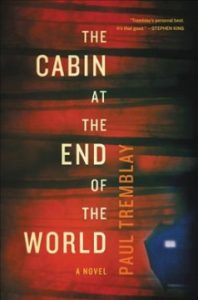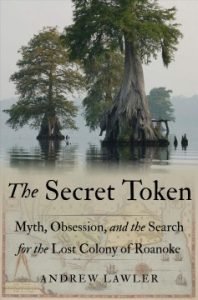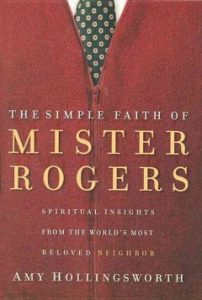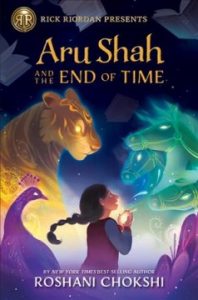Today, we are delighted to welcome Ashur back to the blog to share with us some fascinating information on the clouds above us (and some invertebrates, too!)

For readers in the mid-latitudes of the Northern Hemisphere, summer has arrived. This is doubly-true for New England, where we’ve been experiencing our first sustained period of “summer” weather, despite the season’s various arbitrary start dates (the summer solstice, Memorial Day in the US, the “start” date of the Atlantic hurricane season, etc). For some, it means a break from school; for others, vacation. Others yet, farmers markets and fresh in-season produce. Of course, for some of us it’s just a change of clothing.
For me, it marks noctilucent cloud-watching season, which generally spans May-August in the Northern Hemisphere and November-February in the Southern Hemisphere. Noctilucent clouds (NLCs, also known as PMCs, polar mesospheric clouds) are generally visible only at high latitudes (~45° N/S). Here in Peabody, we’re at 42.5279° N; a little too far south for most, but they’ve been seen as far south as Colorado and Utah in recent years; this week, they were seen in Seattle, which sits at 47.6062° N.
Unlike most clouds, NLCs form high above the earth in the mesophere; in contrast, with certain unusual exceptions (which we’ll talk about in a bit), all cloud activity (and what we consider weather, in general) takes place in the lowest layer, the troposphere. NLCs’ altitude causes them to be underlit by the sun after it’s sunk below the horizon, producing their night-shiningness.
When we’re talking about clouds, we’re generally referring to the clouds found in the simplified chart below:
For a more descriptive guide to cloud types, the University of Illinois has a handy and succinct guide, which features many excellent photos.
Returning what I alluded to earlier, there are two other types of extra-tropospheric clouds, though one’s a bit of a cheat: 1) tops of cumulonimbus clouds (in some cases) and 2) nacreous clouds, also known as polar stratospheric clouds (PSCs).
Depending on where you live and the season, the cauliflower-topped-with-an-anvil shape of cumulonimbus may be a frequent sight. The cause for the flattening (and at times with wispy cirrus tendrils at the top, a variety of cloud called cumulonimbus capillatus) is the cloud’s top running into the tropopause, the boundary between the troposphere and stratosphere. Nevertheless, they can poke a bit above the tropopause into the stratosphere, though conditions there prevent them from extending higher. If you’re curious, here’s a bit more detail on the various characteristics of our planet’s atmospheric layers.
Above is a nacreous cloud, also known as a polar stratospheric cloud (PSC; guess what layer of the atmosphere they form in). While visually stunning, nacreous clouds are not benign: they have a role in the destruction of Earth’s protective (for us!) ozone layer, which is also located in the stratosphere. If you’re interested in the nitty-gritty physics, Harvard has you covered. For a more lay-friendly approach, NASA says:
These high altitude clouds form only at very low temperatures help destroy ozone in two ways: They provide a surface which converts benign forms of chlorine into reactive, ozone-destroying forms, and they remove nitrogen compounds that moderate the destructive impact of chlorine. In recent years, the atmosphere above the Arctic has been colder than usual, and polar stratospheric clouds have lasted into the spring. As a result, ozone levels have been decreasing.
PSC is a more accurate term than “nacreous” (meaning to resemble nacre, which is also known as mother-of-pearl), as not all PSCs have this appearance.

Because I am contractually obligated to talk about invertebrates at some point in a given blog post, let’s talk about mother-of-pearl/nacre. Cornell University has the goods on the precise material process that is used to create nacre; a more accessible description can be found here.
Like pearls themselves, nacre can be found in a variety of different mollusks, not just pearl oysters. Nacre itself is what coats the outside of a pearl (if it’s from a pearl oyster or pearl mussel) and gives the pearl its characteristic appearance. As shown as above, abalone produce spectacular mother of pearl.

Cephalopods also produce mother of pearl: the inside of some chambered nautilus shells are iridescent, and there is the iridescent mineral ammolite, which can found on some fossils of the long/sadly-extinct ammonite.

Returning back to NCLs and PSCs, it’s worth noting that NLCs are recently observed and identified atmospheric phenomena: there is no record of their observation prior to 1885 and there have been suggestions linking their appearance to the catastrophic eruption of Krakatoa in 1883. While nothing has been conclusively proven (at least according to my research efforts), there has also been discussion of NLCs being linked to climate change and the effects of the Industrial Revolution.

Finally, since we’ve been discussing these colorful night-shining and pearlescent clouds, I should take the time to mention an optical phenomenon that can occur with “ordinary” tropospheric clouds: iridescence. Depending on the angle of sun/moonlight and how water droplets or ice crystals are aligned in a cloud, diffraction can cause a colorful iridescent effect to be seen.
For more images of NLCs, PSCs, aurora and other spectacular images of the sky (and beyond, in some cases), may I recommend Atmospheric Optics and Polar Image?
Do you personally want to also take stunning images of things high in the sky? Rayann Elzein has a tutorial on his site.
Finally, if you too want to keep up with interesting atmospheric phenomena that may or may not be near you, pay attention to spaceweather.com: You’ll find information about aurora, satellite and space station flybys, noctilucent clouds, solar flares, sunspot activity, eclipses, meteor showers (the Perseids are coming in August!), weird clouds due to missile or rocket launches and more.
If you’re interested in learning further about clouds, how to predict the weather based on cloud conditions (WARNING: Orographic lifting ruins everything) or about others’ adventures as they explore and pursue clouds, read on for book recommendations!
The Cloudspotter’s Guide: The Science, History and Culture of Clouds, by Gavin Pretor-Pinney, Founder of the Cloud Appreciation Society: The author says: The Cloudspotter’s Guide was our first book. Written by Society founder, Gavin Pretor-Pinney, it was turned down by 28 publishers but then went on to be an international bestseller and is now in 20 translations. It is predominantly black and white throughout, with a short colour section in the middle. The Cloudspotter’s Guide explains in an entertaining way that is accessible to everyone how and why clouds form, but it also explores our curious relationship with clouds, showing how this has been expressed over the centuries in literature, art and film. After all, these “patron goddesses of idle fellows”, as the Greek playwright Aristophanes described clouds, have been the ever-present, subtle backdrop to the whole of human existence. If you’re interested in learning more about or perhaps joining the ranks of the Cloud Appreciation Society, here’s where to find them.
The Cloud Collector’s Handbook, by Gavin Pretor-Pinney he Cloud Collector’s Handbook fits into the pocket, allowing cloudspotters to identify cloud formations anytime and anywhere. All the common cloud types are represented, as are many of the rare ones, each fully described and illustrated with a range of photographs. Not only is The Cloud Collector’s Handbook an invaluable resource for anyone who wants to be able to identify and understand every cloud that floats by, it also caters for the competitive cloudspotter. Points are awarded for each cloud type identified – the rarer the cloud, the greater points – and there’s space to fill in where and when it was sighted. Beautifully designed, in colour throughout, and full of the humour that made The Cloudspotter’s Guide so engaging, the Handbook is the essential reference for anyone with their head in the clouds. This handbook is now printed on coated paper so that the images are clearer and more vibrant.
 An Observer’s Guide to Clouds and Weather: A Northeastern Primer on Prediction, by Toby Carlson, Paul Knight, and Celia Wyckoff: Today, most people look down when they want to check the weather, peeking at cell phones or popping open a browser, instead of looking up at one of the most accessible weather predictors of all–the sky. Knowing what the atmosphere has in store without relying on technology can be a gratifying experience, and now with An Observer’s Guide to Clouds and Weather , it is also one that is easy to learn. This informative and accessible guide walks readers through the basics of making weather predictions through understanding cloud types and sky formations. It explains, in nontechnical terms, the science behind the weather, connecting fundamental meteorological concepts with the processes that shape weather patterns. Readers will learn how to develop their powers of observation and hone their ability to make quick forecasts without complicated tools. Whether you’re an amateur weather enthusiast or a beginning meteorology student, An Observer’s Guide to Clouds and Weather will help anyone who prefers looking up to looking it up. If you’re interested in checking out this book, please speak with a librarian.
An Observer’s Guide to Clouds and Weather: A Northeastern Primer on Prediction, by Toby Carlson, Paul Knight, and Celia Wyckoff: Today, most people look down when they want to check the weather, peeking at cell phones or popping open a browser, instead of looking up at one of the most accessible weather predictors of all–the sky. Knowing what the atmosphere has in store without relying on technology can be a gratifying experience, and now with An Observer’s Guide to Clouds and Weather , it is also one that is easy to learn. This informative and accessible guide walks readers through the basics of making weather predictions through understanding cloud types and sky formations. It explains, in nontechnical terms, the science behind the weather, connecting fundamental meteorological concepts with the processes that shape weather patterns. Readers will learn how to develop their powers of observation and hone their ability to make quick forecasts without complicated tools. Whether you’re an amateur weather enthusiast or a beginning meteorology student, An Observer’s Guide to Clouds and Weather will help anyone who prefers looking up to looking it up. If you’re interested in checking out this book, please speak with a librarian.
A Sideways Look at Clouds, by Maria Mudd Ruth Author Maria Mudd Ruth fell in love with clouds the same way she stumbles into most passions: madly and unexpectedly. A Sideways Look at Clouds is the story of her quite accidental infatuation with and education about the clouds above. When she moved to the soggy Northwest a decade ago, Maria assumed that locals would know everything there was to know about clouds, in the same way they talk about salmon, tides, and the Seahawks. Yet in her first two years of living in Olympia, Washington, she never heard anyone talk about clouds-only the rain. Puzzled by this lack of cloud savvy, she decided to create a 10-question online survey and sent it to everyone she knew. Her sample size of 67 people included men and women, new friends in Olympia, family on the East Coast, outdoorsy and indoorsy types, professional scientists, and liberal arts majors like herself. The results showed that while people knew a little bit about clouds, most were like her-they had a hard time identifying clouds or remembering their names. As adults, they had lost their curiosity and sense of wonder about clouds and were, essentially, not in the habit of looking up. A Sideways Look at Clouds acknowledges the challenges of understanding clouds and so uses a very steep and bumpy learning curve – the author’s – as its plot line. If you’re interested in checking out this book, please speak with a librarian.
 The Invention of Clouds: How an Amateur Meteorologist Forged the Language of the Skies, by Richard Hamblyn: The Invention of Clouds is the true story of Luke Howard, the amateur English meteorologist who in 1802 gave the clouds their names — cumulus, cirrus, stratus. He immediately gained international fame, becoming a cult figure among artists and painters — Goethe, Constable, and Coleridge revered him — and legitimizing the science of meteorology. Part history of science, part cultural excavation, this is not only the biography of a man, but of a moment: the cultural birth of the modern scientific era.
The Invention of Clouds: How an Amateur Meteorologist Forged the Language of the Skies, by Richard Hamblyn: The Invention of Clouds is the true story of Luke Howard, the amateur English meteorologist who in 1802 gave the clouds their names — cumulus, cirrus, stratus. He immediately gained international fame, becoming a cult figure among artists and painters — Goethe, Constable, and Coleridge revered him — and legitimizing the science of meteorology. Part history of science, part cultural excavation, this is not only the biography of a man, but of a moment: the cultural birth of the modern scientific era.
 The Weather Wizard’s Cloud Book: A Unique Way to Predict the Weather Accurately and Easily by Reading the Clouds, by Louis D. Rubin Sr. and Jim Duncan: The Weather Wizard’s Cloud Book offers a foolproof three-step system for predicting the weather. With amazing accuracy, this simple system can account for swiftly changing local weather developments more effectively than weather maps or official area forecasts, which are issued well in advance of weather conditions. Includes more than 120 photographs.
The Weather Wizard’s Cloud Book: A Unique Way to Predict the Weather Accurately and Easily by Reading the Clouds, by Louis D. Rubin Sr. and Jim Duncan: The Weather Wizard’s Cloud Book offers a foolproof three-step system for predicting the weather. With amazing accuracy, this simple system can account for swiftly changing local weather developments more effectively than weather maps or official area forecasts, which are issued well in advance of weather conditions. Includes more than 120 photographs.
 The Book of Clouds, by John A. Day: See the sky as you never have before. Using a series of his awe-inspiring images, photographer and scientist John Day–who has a Ph.D. in cloud physics and is known round the world as “The Cloudman”–introduces us to earth’s great skyscape. His spectacular portfolio of pictures captures a variety of cloud forms and shapes, ranging from cottony-soft cumulus clouds to frightening, whirling funnels, as well as a number of optical effects seen in the heavens above. Rainbows, halos, coronas, flashes: all these and more elements in nature’s magic show appear on the page, including the incredible “Parhelia” or sun pillar, shafts of bright light that stretch from the ground right up into the sky. A magnificent cloud chart; an explanation of how clouds form; hints on forecasting, observing, and photographing clouds; and his “Ten Reasons to Look Up” show us how to use our “inner eye” to really see the familiar fleeting forms that seem to float effortlessly above.
The Book of Clouds, by John A. Day: See the sky as you never have before. Using a series of his awe-inspiring images, photographer and scientist John Day–who has a Ph.D. in cloud physics and is known round the world as “The Cloudman”–introduces us to earth’s great skyscape. His spectacular portfolio of pictures captures a variety of cloud forms and shapes, ranging from cottony-soft cumulus clouds to frightening, whirling funnels, as well as a number of optical effects seen in the heavens above. Rainbows, halos, coronas, flashes: all these and more elements in nature’s magic show appear on the page, including the incredible “Parhelia” or sun pillar, shafts of bright light that stretch from the ground right up into the sky. A magnificent cloud chart; an explanation of how clouds form; hints on forecasting, observing, and photographing clouds; and his “Ten Reasons to Look Up” show us how to use our “inner eye” to really see the familiar fleeting forms that seem to float effortlessly above.



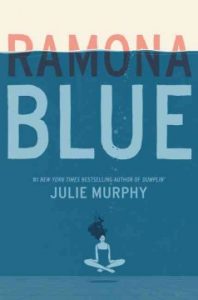

 In the case of younger readers (and anyone who has Summer Reading to accomplish). Time was when ‘Summer Reading’ was akin to force-feeding, especially for those students who weren’t visual learners, or who read more slowly, or in a way that wasn’t strictly standard. And that experience turned a lot of people off of reading for a very long time, which is truly heartbreaking. Thankfully, now, summer reading lists tend to be much more flexible in terms of students’ choices, as well as much more inclusive of popular titles and more modern themes (incidentally, if you want to see some of these lists, for you or a student near you, you can see them
In the case of younger readers (and anyone who has Summer Reading to accomplish). Time was when ‘Summer Reading’ was akin to force-feeding, especially for those students who weren’t visual learners, or who read more slowly, or in a way that wasn’t strictly standard. And that experience turned a lot of people off of reading for a very long time, which is truly heartbreaking. Thankfully, now, summer reading lists tend to be much more flexible in terms of students’ choices, as well as much more inclusive of popular titles and more modern themes (incidentally, if you want to see some of these lists, for you or a student near you, you can see them  For example, despite the fact that we live in a world that is increasingly based on visual learning in the form of computers, tablets, and screens, there are still any number of people who are auditory learners, meaning that they remember better after hearing directions or a story or a lecture than they do after reading or watching one. Often, auditory learners have a tough time with summer reading because it is supposed to be an individual, and highly visual exercise that often feels at once very challenging and very boring. For these readers, audiobooks have been a saving grace. Not only to they present books in a way that auditory learners can absorb much better, they offer
For example, despite the fact that we live in a world that is increasingly based on visual learning in the form of computers, tablets, and screens, there are still any number of people who are auditory learners, meaning that they remember better after hearing directions or a story or a lecture than they do after reading or watching one. Often, auditory learners have a tough time with summer reading because it is supposed to be an individual, and highly visual exercise that often feels at once very challenging and very boring. For these readers, audiobooks have been a saving grace. Not only to they present books in a way that auditory learners can absorb much better, they offer  For
For 
 By 1927, she was able to leave her bed, and Kahlo had the opportunity to rejoin her friends, who by this time had joined a number of political organizations and student groups. She herself joined the Mexican Communist Party and, in 1928, she met Diego Rivera, whom she would marry that same year. Both would have extra-marital affairs, Together, the two traveled around Mexico and the United States, and Kahlo began to develop her own artistic following. Her adoption of traditional indigenous Mexican peasant clothing to represent her
By 1927, she was able to leave her bed, and Kahlo had the opportunity to rejoin her friends, who by this time had joined a number of political organizations and student groups. She herself joined the Mexican Communist Party and, in 1928, she met Diego Rivera, whom she would marry that same year. Both would have extra-marital affairs, Together, the two traveled around Mexico and the United States, and Kahlo began to develop her own artistic following. Her adoption of traditional indigenous Mexican peasant clothing to represent her 
